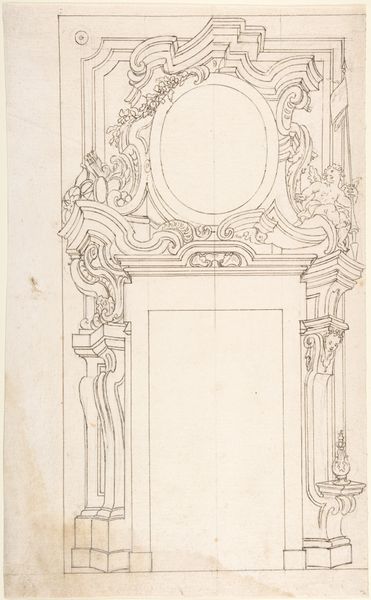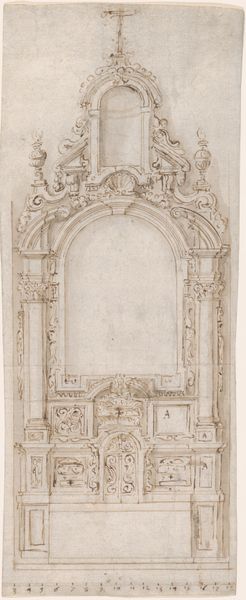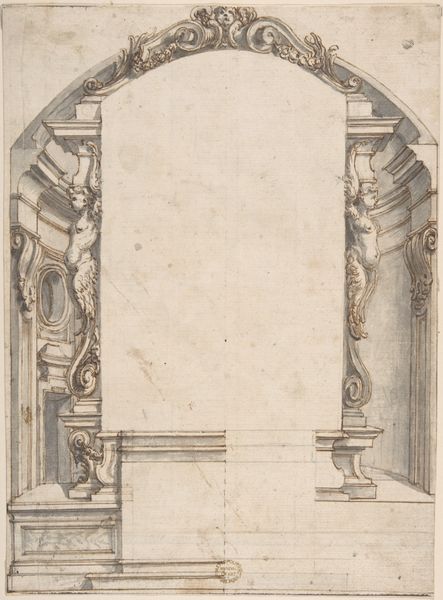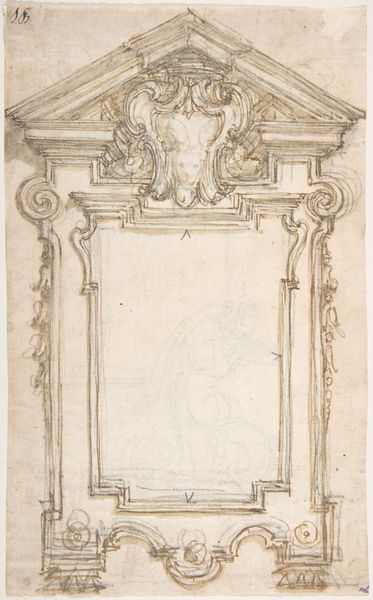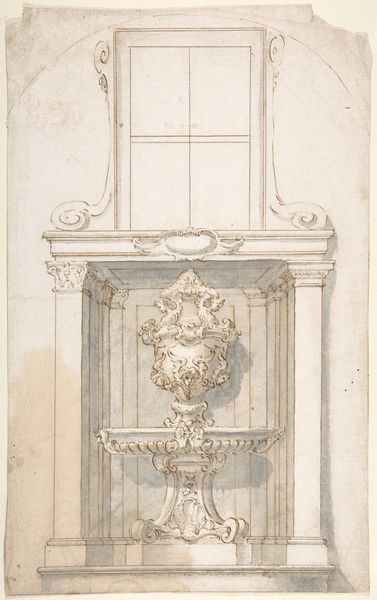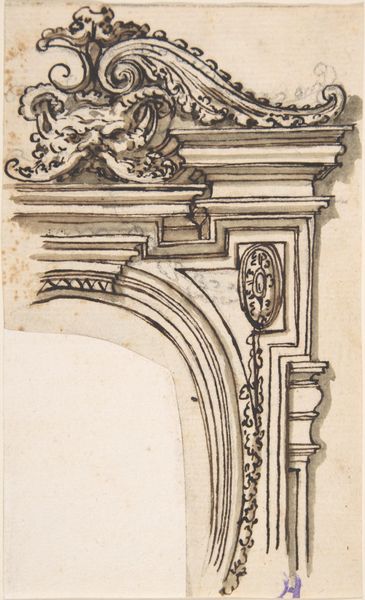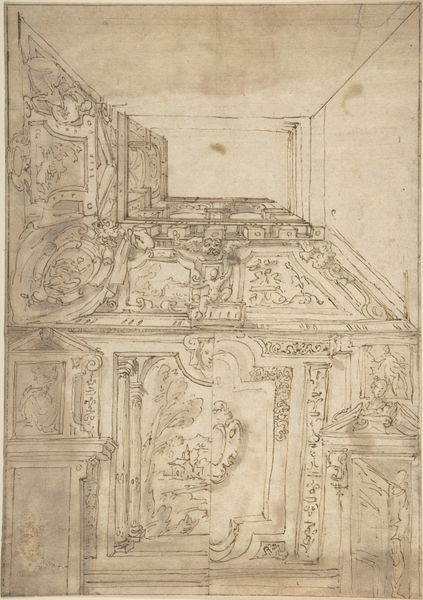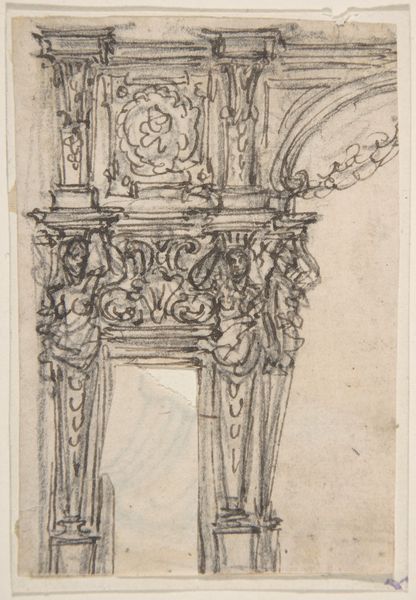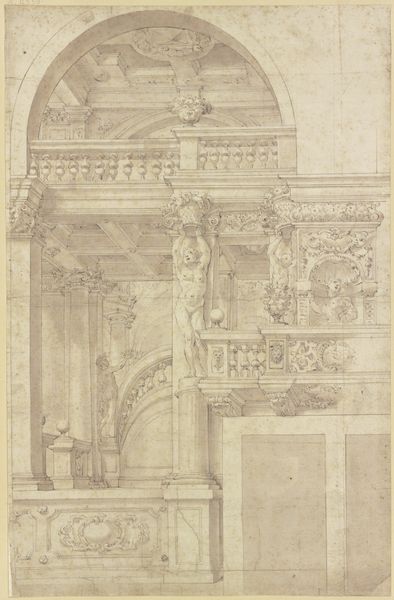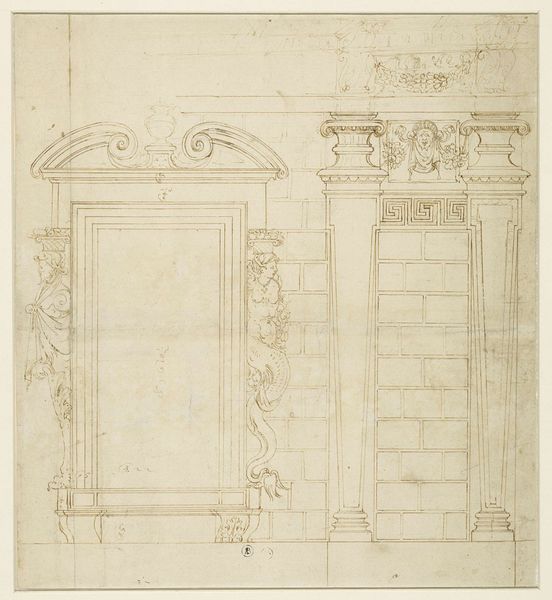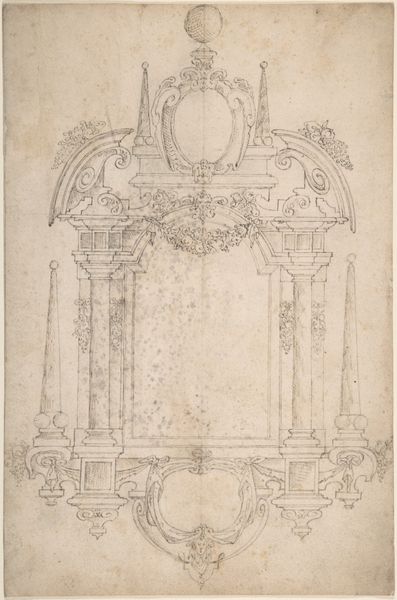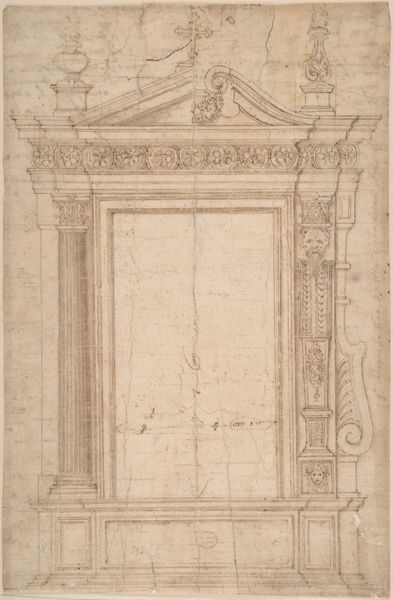
drawing, print, etching, architecture
#
drawing
#
baroque
# print
#
etching
#
pencil sketch
#
etching
#
form
#
geometric
#
line
#
architecture
Dimensions: 10-3/16 x 4-5/8 in. (25.9 x 11.8 cm)
Copyright: Public Domain
Curator: This intriguing print, titled "Design for an Altar," was created sometime between 1600 and 1700 by an anonymous artist. It resides here at the Metropolitan Museum of Art, offering a glimpse into Baroque architectural design. Editor: It looks so fragile, like a meticulously drawn daydream. The detailed ornamentation clashes with the austerity of the empty altar space. I get the feeling that religion is becoming more like a decor piece than anything else. Curator: Baroque art is precisely that collision of grandeur and intention, which reflects a very particular moment of religious spectacle and power. Consider the cultural shift from the Reformation; Catholic altar designs were intended to be awe-inspiring displays of faith. Editor: Sure, "displays" being the operative word, right? So the etching technique is fascinating because you see how these artists were trying to show off their creative flair back then. And you think, where do they get these bizarre flourishes? Curator: Absolutely, the design displays a theatricality emblematic of the Baroque period. This print gives art historians insight into not just the religious contexts but also the design trends and aesthetic priorities of the time. Editor: It is a constant reminder that every design choice has a message, even in something as simple as this sketch of the line weights. This level of ornamentation has always felt overwrought, designed to convey status and control. And religion ends up in the middle. Curator: The fact that we don't know the artist's name speaks to another aspect of art history. Much work was unsigned, either collaborative or created by those not deemed "masters," but these architectural prints are still valued documentation today. Editor: Indeed. As a record, it invites us to contemplate the historical dialogue between art, belief, power, and identity that continues to reverberate. This image helps to unearth social inequalities in artistic visibility while addressing complex systems of dominance and belief. Curator: An apt reminder that studying "Design for an Altar" connects us to past power structures. Editor: Agreed, looking deeper, that is where its power resides now.
Comments
No comments
Be the first to comment and join the conversation on the ultimate creative platform.
